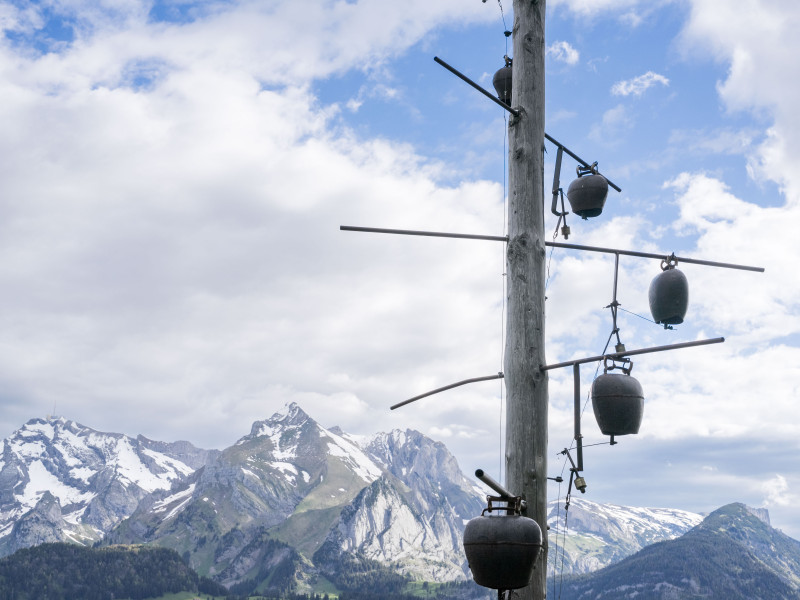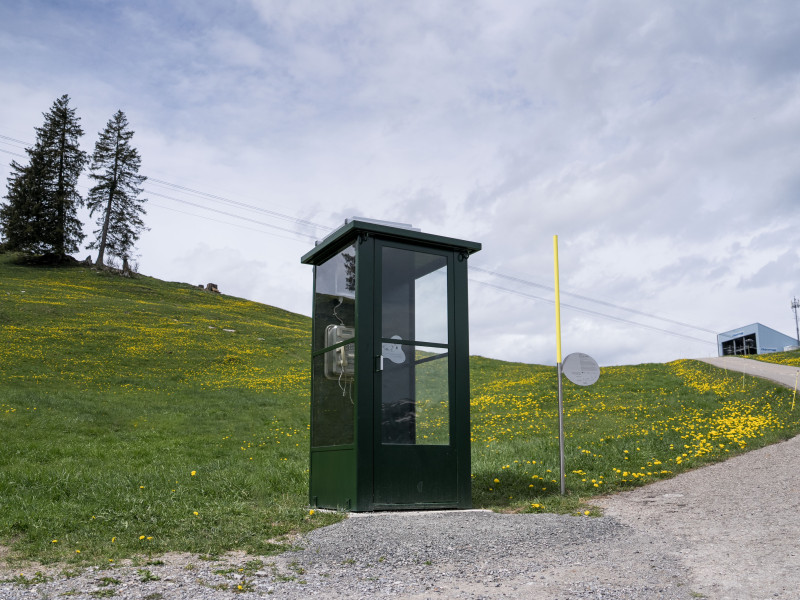
Can a cable car be considered a musical instrument? The Swiss composer and musicologist Michel Roth says yes, because he wandered through the Swiss cable car landscape with his ears open to explore the phenomenon of “singing ropes”.
Ropes like strings and masts like bridges
On winter nights, when the cable cars are not in operation, the falling snow remains on the ropes for a while – until it becomes too high and suddenly falls over a remarkable length. The sudden relief causes the ropes to vibrate. Sometimes they continue to vibrate for up to half an hour, creating a sound that resonates through the Alpine winter and is well known to the locals: the ropes sing.
Vibrating cable car ropes can be compared to the strings of a guitar. On a violin, the vibrations of the strings are transmitted to the bridge. On an electric guitar, a pickup is needed to hear the vibrations. On a cable car, which is considered a musical instrument, the cable car mast is the sound source.
The mast as a permanent sound installation
If you were to place your ear against the metal of the mast and listen very carefully, you might be able to hear the vibrations without any technical amplification. But that would be a somewhat dangerous idea. Therefore, a little technology goes a long way to support the perception of the vibrations and amplifies what is already there: the sounding mast.
Magnetic contact microphones are located inside the cable car's hollow mast, recording the vibrations of the metal and transmitting them via an amplifier to a loudspeaker – both internally and externally. From the gap at the bottom of the mast, a kind of sound wave now sloshes towards the hikers on the adjacent sound trail. The vibrations of the ropes bubble up in this sound wave, as do the sounds of the birds and the voices of the people.
“These masts, these cavities and these ropes react extremely sensitively to everything that happens around them. Each mast acoustically reflects its surroundings and in it we find both human and natural elements. And so the cable car, as a kind of resonance body, reflects our lives."
About the artist
Michel Roth has been Professor of Composition and Music Theory at the University of Music FHNW in Basel since 2011. The multi-award-winning composer regularly works with renowned interpreters. He publishes on music-theoretical topics and is a music curator and co-author of interdisciplinary exhibitions. Born in Altdorf (Uri), he has been aware of the acoustic presence of the cable car networks since his childhood and later researched their sociological significance in an interdisciplinary project. www.michelroth.ch Audio programming: Arev Imer Technology & energy supply: Kaspar Hochuli, Tweaklab AG Consultancy & planning: Simon Hauswirth and Ramon De Marco, Idee und Klang Audio Design
michelroth.ch ↗

